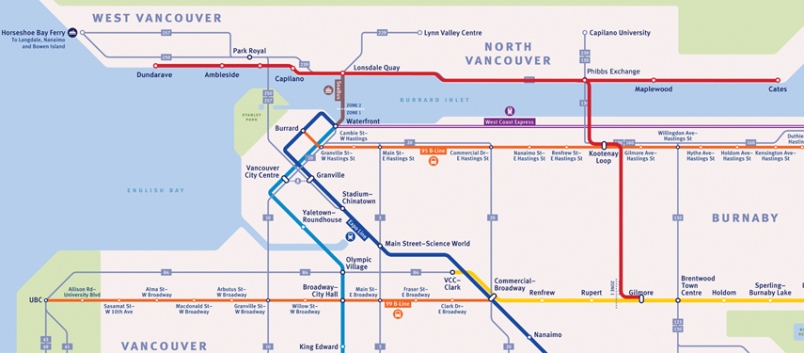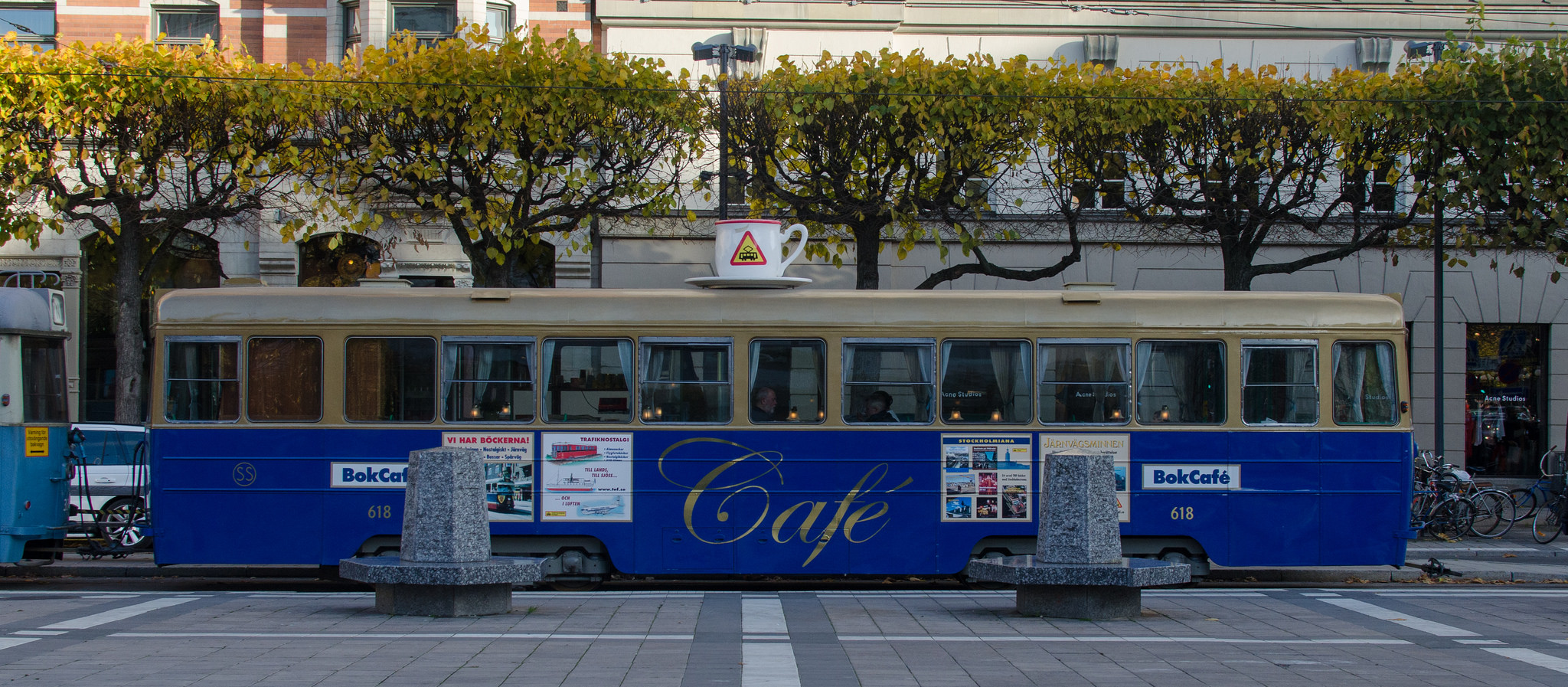Fifty years ago, the problem with living in Deep Cove was that you couldn’t get out of it. A privately owned bus company made the run into downtown Vancouver in the morning and returned in the afternoon. Otherwise, you had to walk or drive.
Today, the problem with Deep Cove is that you can’t get into it — least of all after 3 p.m. After that, you’re just another statistic in Lisa Christensen’s grim CBC radio reports from the Upper Levels Highway and the bridges.
North Shore transportation is the result of catastrophic success: so many people want to live in North and West Vancouver that a construction boom has brought in hordes of workers who can’t afford to live in the houses and condos they’re building. They swarm across the bridges in the morning, knock off in mid-afternoon to go pick up their kids in Surrey, and swarm back the next day. Meanwhile, people who actually live on the North Shore creep through the herds of pickup trucks.
The District of North Vancouver is currently trying to remedy the problem by hacking new lanes out of the bottom of the bottom of the Cut, where the Upper Levels Highway drops before crossing Lynn Creek, giving people east of the Seymour a chance to get home. That project, until it’s finished, is slowing traffic still more. When it’s done, it will only encourage more people to buy east of the Second Narrows, compounding our local congestion problems.
Unhappiest, most livable city
We are currently celebrating the 50th anniversary of the defeat of the proposed freeway that would have destroyed Chinatown and Gastown (and likely made the West End uninhabitable). That’s helped earn Vancouver kudos as the third “most livable” city in the world. Yet for years we have also been Canada’s unhappiest city.
One reason, of course, is that you can’t afford to live here. Another is that if you can afford to live here, you don’t dare leave home without careful calculation of your travel time to your destination and back.
This problem has caused a lot of political pressure on North Shore municipal governments. They have responded by trying to make more room for SUVs on the Cut. In North Vancouver, a major development is under way just east of the Second Narrows, which fancifully imagines high-tech industries employing workers who live in new condos and townhouses within walking distance. Improved public transit will come, we’re told, when the development is dense enough.
So more diesel-belching buses will eventually appear on the Seymour Parkway and the Dollarton Highway, but until then, commuters and shoppers will just have to fight for their own SUVs’ road space.
SkyTrain to nowhere
Jane Thornthwaite, Liberal MLA for North Vancouver-Seymour, has proposed a SkyTrain extension across the Ironworkers’ Bridge and then west to West Vancouver’s Dundarave and east to North Van’s Cates Park. That’s a distance of about 20 kilometres. At the cost per kilometre of the Canada Line, that would be $2.26 billion. At the cost of the Evergreen Line, Thornthwaite’s line would be $2.54 billion.

And this would take commuters from a North Vancouver park to a West Vancouver neighbourhood shopping area, both of which would presumably require big parking lots to accommodate people living beyond those destinations who drive to the new SkyTrain.
I have another idea. It’s highly impracticable because it’s usually built before urban development, not tacked on after car-friendly roads have become literally carved in stone. But it used to operate right here in Vancouver and it still flourishes in European cities like Stockholm and Helsinki. Vancouver itself is now beginning to think about reviving the idea.
I’m talking about trams — good, old-fashioned streetcars, like the ones I rode as a kid in Los Angeles 65 years ago before the freeways.
Such trams are, in many ways, the most pleasant ways to get around in the Nordic countries. Copenhagen’s subway is so high-tech, it looks like a computer-generated special effect and can whisk you not just to the airport but also across the Øresund Bridge to Malmö, Sweden. But until you reach the bridge, it’s just a fast, loud train in the dark. Stockholm and Helsinki have similar subways, as well as frequent and efficient buses.
The quiet pleasure of the tram
But Swedish and Finnish trams are a pleasure as well as a service. They glide quietly through the streets, offering a scenic tour. Spaces are available for people using wheelchairs or baby prams. It’s easy for everyone to get on and off.
So consider a tram system for the North Shore as a solution to the gridlock. From Burnaby’s Kootenay Loop, you step onto a sleek tram with comfortable seats and big windows. It whisks you down Hastings and onto Ironworkers Memorial, gliding over the bridge past the cars and trucks to Phibbs Exchange. Hop off and transfer eastbound along the Dollarton Highway and then north to Deep Cove.
Stay aboard and head west on the Seymour Parkway, where you can transfer to buses running up to the ski hill or to the top of Delbrook. You could also run up the Cut to Lynn Valley, or Lonsdale, or any of the other key north-south corridors between Marine Drive and the mountains — all the way out to Horseshoe Bay. From there, loop back through West Vancouver through Park Royal, Lower Lonsdale and back to Phibbs Exchange.
Don’t bother to price what you’ll never build
I have no idea what such a tram system would cost, and it doesn’t matter because we’ll never build it. Still, it’s a pleasure to imagine the views of Vancouver from the Upper Levels and the Ironworkers Memorial, not to mention whizzing past the cars and trucks crowded into fewer lanes to make room for tram passengers.
It’s also nice to think about the benefits to the communities around the tram stops. Deep Cove currently has a horrendous parking problem on every sunny weekend day as people arrive to eat ice cream cones or climb Quarry Rock. They could do so with less hassle if they caught the tram.
The same would be true of skiers bound for Mount Seymour or Grouse Mountain or Cypress, or foot passengers bound for Horseshoe Bay and the ferry to Nanaimo.
The North Shore trams would be a destination in themselves for cruise ship passengers and other tourists, even better than San Francisco’s overrated cable cars.
Of course it would inconvenience everyone to build a streetcar system on roads where every driver thinks he’s the only one with a right to be on them. More construction workers from Surrey would flood our roads until the tramlines were finished — and they’d keep coming afterward, to build still more housing all over the North Shore.
But the rest of us by then would have abandoned the Upper Levels to the pickup trucks; instead, we’d walk a few minutes to the local tram stop, step aboard, and get wherever we wanted to go while communing with our smartphones or (more wisely) looking out the windows at a truly livable Vancouver. ![]()
Read more: Transportation, BC Politics
















Tyee Commenting Guidelines
Comments that violate guidelines risk being deleted, and violations may result in a temporary or permanent user ban. Maintain the spirit of good conversation to stay in the discussion.
*Please note The Tyee is not a forum for spreading misinformation about COVID-19, denying its existence or minimizing its risk to public health.
Do:
Do not: